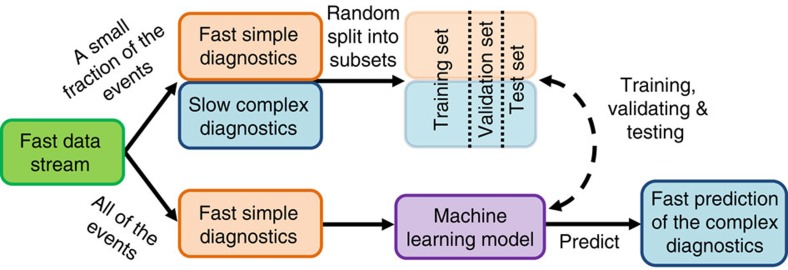Figure 1. Machine learning technique.
Schematic technique based on machine learning to predict complex diagnostics at a high repetition rate using a fraction of fully diagnosed events containing all the information obtained at a much lower repetition rate. Information from fast diagnostics is available for all the events, but information from the complex diagnostics is only available for a small fraction of the events. The set of fully diagnosed events is divided into different subsets: the training set, the validation set and the test set. The training set is used to train a machine learning model on how to predict the information obtained with complex diagnostics using the simple diagnostics as input. The validation set is used to optimize the training process by minimizing the prediction errors on that set. The final prediction error for the optimized model is calculated using data from the test set. Once the final optimized model is trained and tested, it can be used to predict the missing information from the complex diagnostics for the remainder of the events.

